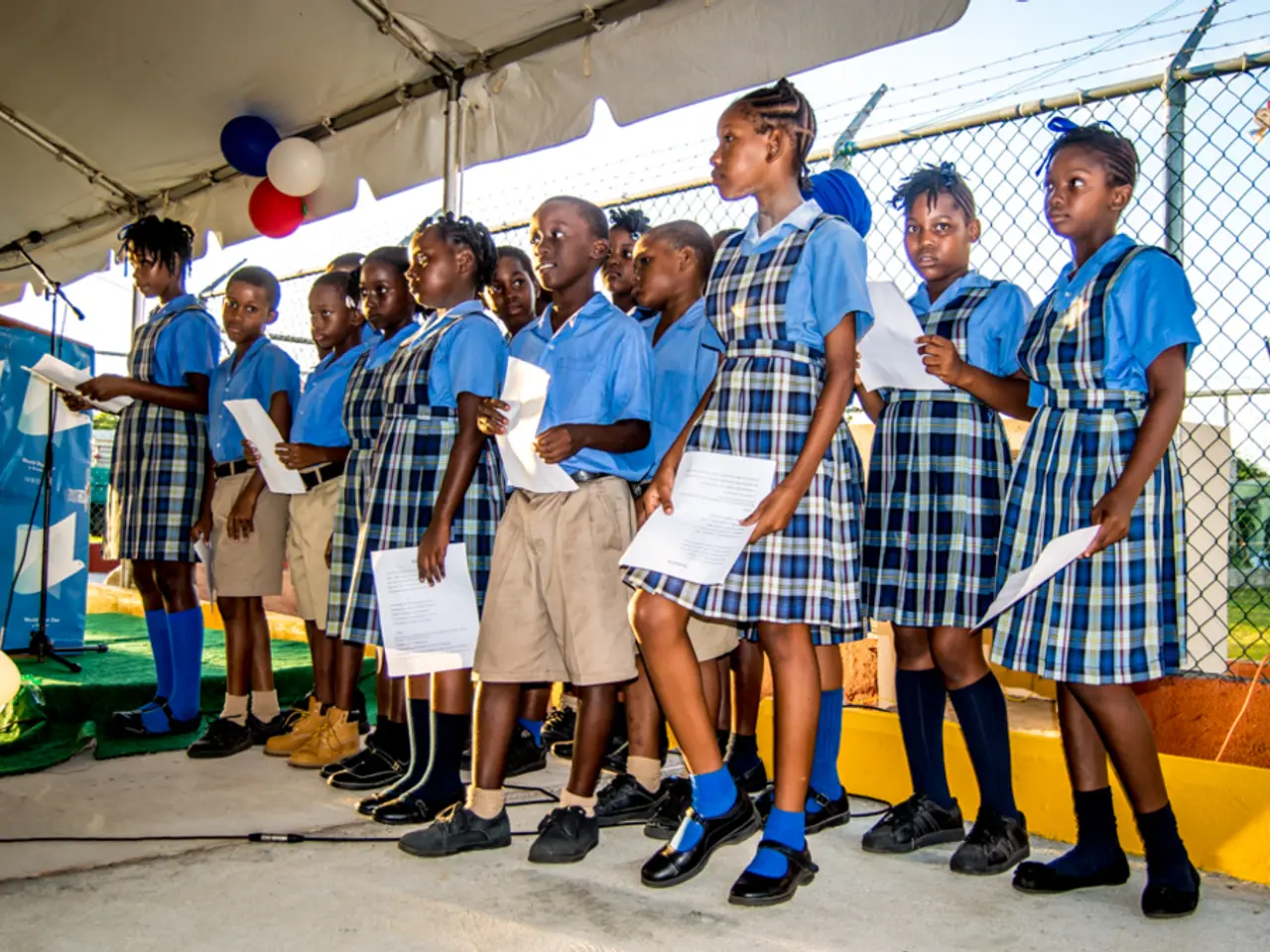Struggles persist in NYC schools with over 40% of students lacking sufficient education, potentially worsening in the near future.
A Battle of Ideas: New York City Mayoral Candidates Propose Different Approaches to Public Education
The race for New York City's mayoral seat is heating up, and the candidates' proposals for the public-school system are a significant point of contention. The focus is on improving equity, resources, and after-school support to tackle educational disparities, particularly high failure rates in math and English among city children.
Zohran Mamdani's Proposals
Mamdani, an advocate for addressing funding inequities in the city's poorest school districts, plans to fully fund struggling schools in areas like East New York and the South Bronx. His vision includes providing essential resources such as functioning libraries, art teachers, and wraparound services (counselors, after-school programs) to uplift underfunded schools[1]. Mamdani argues that the problem lies less in centralized control and more in equitable resource allocation to bridge the stark disparities between wealthy and poor districts.
Eric Adams' Proposals
Incumbent Mayor Eric Adams focuses on expanding after-school programs as a critical step. In 2025, his administration announced 40 new after-school sites to serve working-class families, allocating $331 million over three years to create 20,000 new after-school seats. These programs aim to support children's learning and development by offering sports, robotics, arts, and other enrichment activities, which can indirectly promote academic achievement by fostering engagement and development outside regular class hours[2]. Adams also emphasizes supporting the nonprofit workforce that runs these programs by raising their wages.
The Debate Over Mayoral Control
New York City has a history of mayoral control over the public-school system, which aims to improve accountability and bridge achievement gaps. However, Mamdani criticizes mayoral control when it does not adequately address funding failures and inequities[3]. The ongoing debate over centralized mayoral control relates to how best to organize the system for improved accountability and results, with some data showing benefits but also calls for nuanced reforms.
Impact on the Public-School System
Mamdani's focus on equitable funding and resources for struggling schools could help reduce failure rates in math and English by improving learning environments in the poorest neighborhoods[1]. Adams' expansion of after-school programs provides vital support for students' learning and development, potentially improving academic outcomes by offering additional help outside of standard hours[2]. The ongoing debate over centralized mayoral control relates to how best to organize the system for improved accountability and results, with some data showing benefits but also calls for nuanced reforms[3].
The State of Public Education in New York City
Unfortunately, more than 40% of city kids in grades 3-8 failed math and English in this spring's state testing. The release of the results has been significantly delayed, coming at the end of the summer instead of the start. The mayoral contest in New York City has not offered any debate on improving public education[4].
A Shift in Allegiances
Independent candidate Andrew Cuomo, once better on these issues, has now declared allegiance to the United Federation of Teachers and turned his back on charters[5]. This move has raised concerns among education reform advocates.
Promising Signs
Double-digit improvement in Grade 3 (12.9%) and 5 (15%) reading scores suggests that Mayor Eric Adams' NYC Reads reforms are having a positive impact after two years[6]. These improvements, while not addressing the overall failure rates, are a step in the right direction.
In conclusion, the candidates offer different approaches to addressing the high failure rates in math and English. Mamdani centers on fairness and funding to fix resource disparities in schools, while Adams invests in after-school supports to help raise student success. Both approaches aim to impact the high failure rates by addressing systemic inequities and providing extra academic and developmental support to New York City's youth.
- The upcoming New York City mayoral election is shaping up to be significant for the city's education and self-development, with candidates like Zohran Mamdani and Eric Adams proposing varied strategies for public education.
- Mamdani emphasizes equitable resource allocation and funding to address educational disparities in underprivileged neighborhoods, whereas Adams focuses on expanding after-school programs to enhance learning and development for city children.




